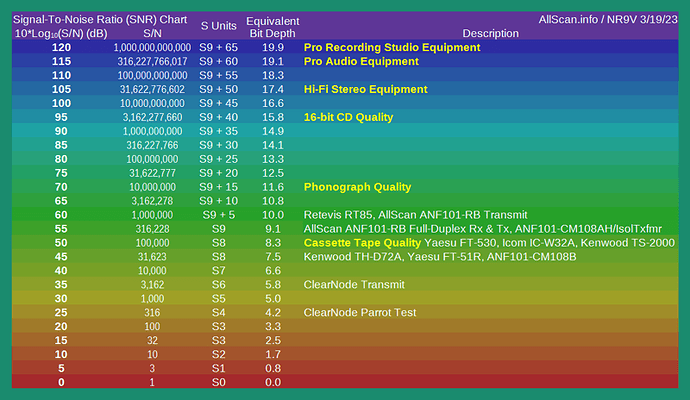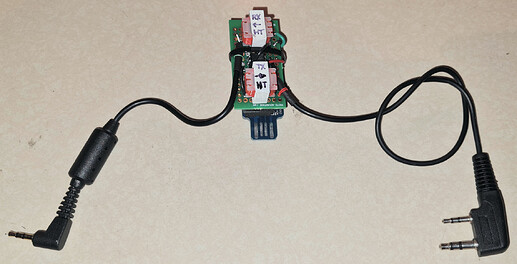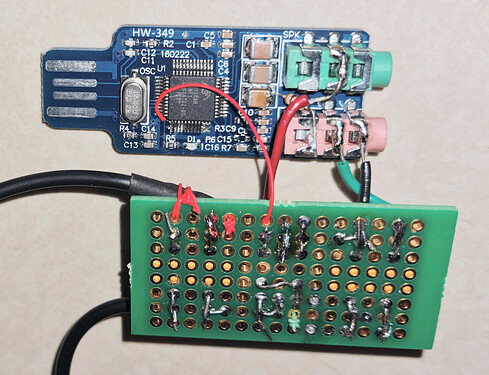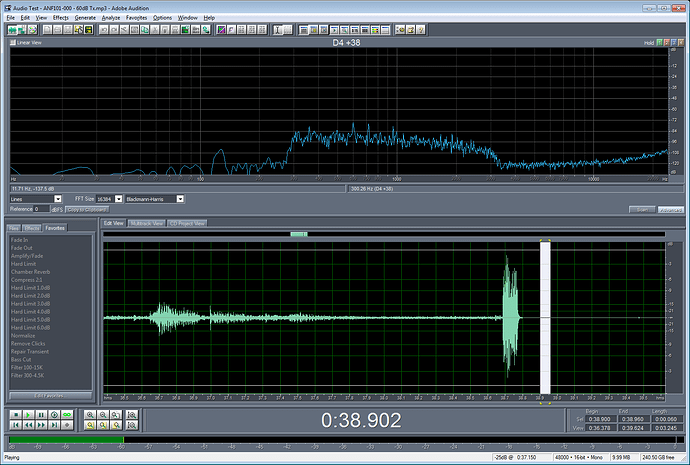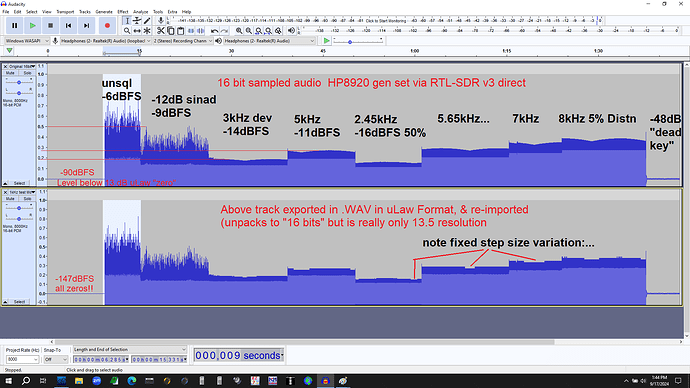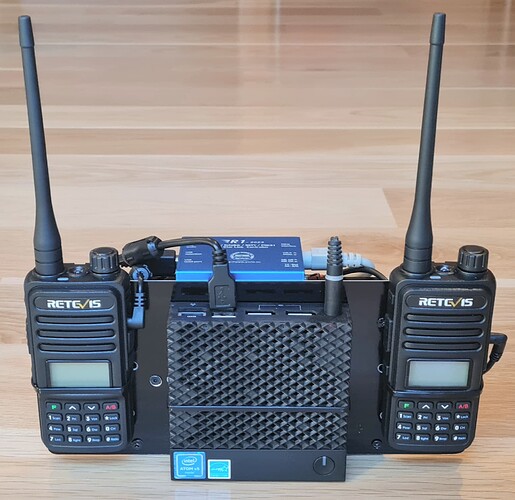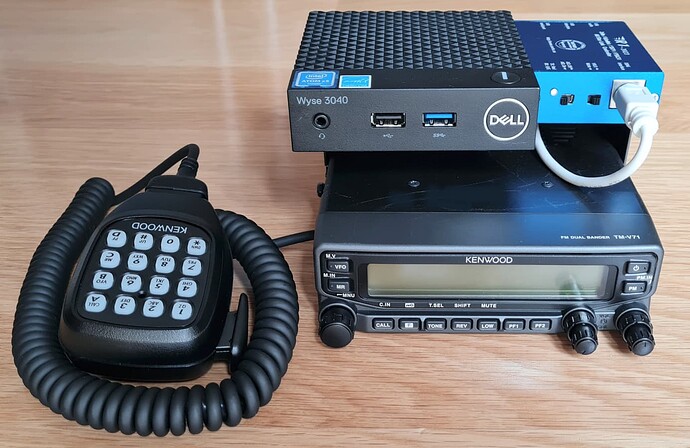I’ve been doing a lot of audio quality testing and optimizations lately and thought I would put together a chart with measurements I’ve done so far, and encourage anyone to reply with actual measurements you have done on other nodes or radios.
As is detailed on my site AllScan.info and on a couple forum posts here I build a lot of nodes and use a wide variety of audio interfaces and radios. My specialty is Full-Duplex ASL nodes using 2 Retevis RT85 radios, which are FCC-certified and sound great, yet are less than $25 ea. Full-duplex nodes are more of a challenge to minimize noise on because I have one RT85 transmitting 1.5W in Low power (on 2m) while the Rx RT85 is less than a foot away (on 70cm), all while you’re also transmitting into the node on another radio on 70cm.
After seeing SNR’s of anywhere from 40 - 60 dB in various scenarios on my nodes it was time to do detailed testing and figure out how to get that closer to 60dB in all cases. After a solid week of testing, including building audio interfaces using various combinations of CM108B and CM108AH USB fobs, Repeater-Builder RIM-Lite V2’s, 600Ω audio isolation transformers, termination resistors, optocouplers, etc. I have things now pretty well optimized and consistently delivering 60dB transmit SNR (node transmit only), and 54dB round-trip full-duplex SNR (node and other radio simultaneously transmitting).
One big surprise was that the RT85s have 60dB of Tx SNR. This is higher than 5 other radios I tested. (Note that to test this requires a mic input to be used with gain set to 0, since we are looking for the noise floor of the Tx audio with no mic signal). Very impressive for a $25 HT.
I’m still refining the audio interface to keep the cost as low as possible while being easy to assemble but delivering very clean audio with essentially zero discernible noise in typical listening conditions.
Another interesting note is that these fobs now are available with a CM108AH rather than CM108B IC, and so far I notice the audio levels are quite a bit higher. I’m still doing additional testing to see what other performance differences there are such as SNR between the AH and B fobs.
For my measurements I record the audio out from an IC-9700 into a 24-bit audio interface, normalize the levels such that open squelch gives 0dB (max) signal level and no clipping on the interface, and then look at the signal and noise levels and noise spectral analysis in a wave editor.
Example showing 60dB SNR while node is transmitting only (hangtime after RXCD drop)
I am now also building a radio-less node and in that case the SNR will be very high but I will also be ensuring the dynamics are similar to what happens with radios, ie. some limiting and possibly compression to make better use of dynamic range and prevent clipping/distortion. I will post more on that in the next couple weeks as I’ll want to be sure a radio-less node will have a similar gain structure and limiting as voice audio over a high-quality radio channel.
It will also be interesting to see what if anything asterisk/App-Rpt can do with dynamics processing. Probably not much - however I have noticed during parrot testing that if I put in a very quiet signal (eg. -50dB) it will get parroted back 10-15dB louder. This seems more than any difference in my various gain settings would account for so I will be taking a closer look at that.
